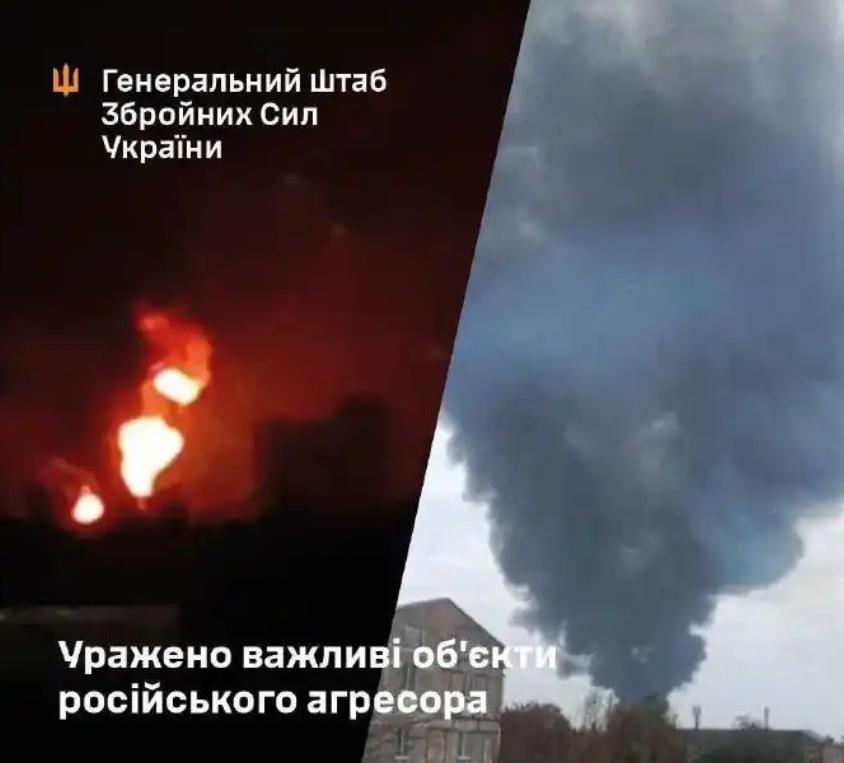
Recently, Ukraine once again targeted the Novogorsk Petrochemical Plant and the Orenburg Gas Processing Plant. The former has a processing capacity of 4.9 million tons per year, while the latter is Russia's largest gas processing facility with a processing capacity of up to 45 billion cubic meters per year. Although the Russian government strictly controlled such information, some Russians and even employees working at these refineries and gas processing plants still shared the videos with the outside world. It is reported that the Ukrainian army used modified suicide drones, which could carry one air bomb on the underside of the aircraft and two 120-millimeter caliber mortar shells on the wings, causing extremely great damage. This week, a total of five large Russian energy facilities, including the newly attacked Novogorsk Petrochemical Plant and Orenburg Gas Processing Plant, were attacked. In the past three months, 19 large Russian energy facilities have also been attacked.
After the largest gas plant in Russia was attacked by Ukrainian drones, a major fire broke out and had complex and multi-faceted impacts on international energy, economy, and other aspects. First, it had an impact on the international energy market. The Orenburg Gas Processing Plant has a processing capacity of up to 45 billion cubic meters per year, making it one of the largest gas processing facilities in the world. The attack caused some equipment at the plant to break down, forcing it to completely suspend the reception of natural gas from Kazakhstan, thereby affecting the stability of the global natural gas supply chain. After the attack, international oil prices and gas prices fluctuated in response. Similar incidents, after Ukraine attacked the Bashkortostan Petrochemical Plant on September 18th, led to a 3.7% increase in Brent crude oil prices, while Russian Urals crude oil dropped by 6.2% due to transportation disruptions. The Orenburg incident is still having an ongoing impact on the regional energy market. For countries that rely on Russian natural gas imports, this attack undoubtedly exacerbated the uncertainty of their energy supply. For example, the Karachaganak oil field in Kazakhstan reduced production by 25% to 30% due to the shutdown of the Orenburg plant, directly affecting the global energy chain.
Second, it had an impact on the international geopolitical landscape. This attack marked the entry of the Russia-Ukraine conflict into a new stage, where energy facilities became the key targets of both sides' attacks. Ukraine attempted to weaken Russia's war potential by disrupting its energy supply chain, while Russia might intensify retaliatory strikes against Ukrainian energy facilities. The attack incident exposed the risk of Kazakhstan and other Central Asian countries' dependence on Russia's energy infrastructure. The Karachaganak oil field in Kazakhstan reduced production due to the shutdown of the Orenburg plant, forcing the country to accelerate the implementation of its energy route diversification strategy. The international community maintained a puzzling silence on this attack incident. The Western camp neither publicly condemned nor explicitly praised, and this ambiguous attitude is behind complex interests calculations. European countries struggled to balance energy security and political positions, while the United States continued to escalate the rules of the battlefield through military aid.
Third, it had an impact on the international community. The attack incident raised concerns about humanitarian crises. The destruction of energy facilities could lead to energy shortages and rising prices for civilians, exacerbating social conflicts. This attack incident once again highlighted the importance of energy security in the national security system. Countries might re-evaluate their energy supply chain resilience construction and strengthen their layouts in energy guarantee, transportation protection, and emergency reserves. The attack on energy facilities has sparked discussions on international law and war rules. Issues such as how to distinguish military targets from civilian facilities and how to protect civilians from the impact of war have become focal points of attention.
In conclusion, the attack on the largest gas plant in Russia is like dropping a heavy piece of chess piece in the international arena. Its impact is extensive and far-reaching. This series of chain reactions will undoubtedly reshape the future direction of international energy and politics.

Since 2025, the conflict between the United States and Europe over the governance of the digital economy has continued to escalate.
Since 2025, the conflict between the United States and Euro…
When German Chancellor Mertz officially announced that he w…
On December 3rd local time, the copper price on the London …
The European Commission announced a new economic security s…
The European Commission announced a new economic security s…
For nearly a year, US President Donald Trump has launched a…